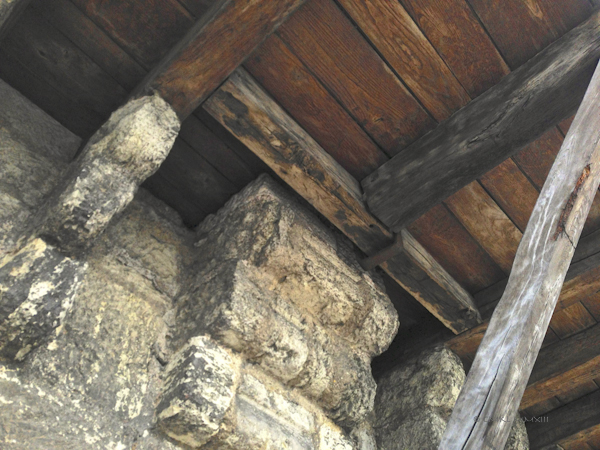Many years ago, I read and greatly enjoyed ‘An Instance of the Fingerpost’ by Iain Pears. Aside from wondering, how to pronounce ‘Iain’ (Remember, I’m not even a native English speaker, let alone Scottish Gaelic), his writing is like whipped cream over strawberries with a splash of balsamico – smooth yet tongue tickling. Prior to the Fingerpost, I had read his Flavia di Stefano (rolls off your tickled tongue, doesn’t it?) and Jonathan Argyll (checkered socks, anyone?) art-crime novels, chuckling all the way. Having spent a little time around Renaissance art in Florence in my misspent youth, I could easily buy into this series’ atmosphere. Then came Scipio. Specifically Pears’ ‘The Dream of Scipio’, which is unadulterated fun for any aficionado of the Punic Wars and convoluted storylines. Like me.
Have I lost my train of thought? Yes, it is so easy to get lost in the memories of great books. Both my parents were instrumental in turning me into a reader. At the beginning of first grade, my mother gave me a book titled ‘Das Eselchen Grisella’ (the little donkey Grisella) by Denneborg. She read the first chapter to me before handing me the book suggesting, if I want to find out what happens next, I better learn how to read. Which I did fairly rapidly!
My Grandmother also supported my literary adventures by giving me two equally unforgettable books. One was called ‘Der versunkene Wald’ by Michel Rouzé. It dealt with a submerged petrified forest and the best way to kill squid with your teeth. At least in my memory. The other one was ‘Ein Schiff nach Grönland’ about a doomed settlement in late 15th century Greenland. It featured death by starvation, a kidnapping by skrælings, snow blindness and a feather shirt. I was so enamored and confused by this mysterious garment made of feathers! For the life of me, I couldn’t imagine how one might sew clothing out of feathers. Gradually the shirt faded in my memory, until, 45 years later, I suddenly stood in front of a shirt made of feathers. Neighbors, Alaskans, own an antique Inuit feather shirt, which they display in a shadow box on their living room wall. As soon as I saw this gossamer marvel, I recognized it without any doubt as the feathery enigma of my childhood. I nearly cried, because it was such a beautiful thing.
But it is my father, whom I have to give credit for igniting my passion for history, drama, anthropology and the written word. Among the books I remember receiving from him when I was around ten years old, was Cooper’s ‘The Last of the Mohicans’, ‘Alexander’ by Klaus Mann and an almost complete set of Karl May books. This iconic German writer, who had never been anywhere but his home province, and prison, when he wrote most of his adventure novels, which are set in the Old West of America and the deserts of the Middle East. To this day I can flawlessly recite the name of the hero’s companion, Hadschi Halef Omar Ben Hadschi Abul Abbas Ibn Hadschi Dawud Al Gossarah. I loved these stories so much that I began reading by flashlight under my blanket well after the whole household was asleep. My fifth grade teachers were less than pleased, though, since I was often so tired after reading until a story concluded or the flashlight dropped from my numb fingers that I couldn’t muster even a token interest in their presentations, which seemed so dull compared to swift falcons landing on a sheik’s fist or Old Shatterhand being trapped in an ambush. My parents were advised of the possibility of mental retardation and I had to repeat the grade. More time to read! My father kept us awash with titles and discussions, thus teaching us fun facts and fiction from Aristotle to Hermann, chieftain of the Cherusci, mixed with some Celtic mysteries. He was especially fond of Ostrogoth. So much so that he had hoped to name his firstborn daughter ‘Amalaswintha’ after Emperor Theoderic the Great’s little girl. Good thing my mother vetoed that notion successfully.

What I’m rambling about is the twinning in my mind of literature and imagery. I’ve never been fond of watching movies made of books, I had enjoyed reading, for example, Pasternak’s ‘Doctor Zhivago’. As hard as I cried reading the novel, I hated watching Omar Sharif’s smoldering brown eyes weep their way through the Russian revolution. He was like those gorgeous looking, overly decorated birthday cakes, all sugar, no flavor. When I read a book, I see the characters and scenery unfold across an internal movie screen of my own design, which usually clashes vehemently with the vision of Hollywood producers. Seeing images when reading occasionally reverses to remembering words when I create an image – as happened when I was working on a photo I call ‘The Foundation’.
This foundation morphed, after a tangent into blood dripping from stone, into an image, which immediately screamed fingerpost at me, Pears’ Fingerpost, that is.

Making it this far into my story shows great focus and stamina! Should you have further reserves of patients at your disposal, don’t hesitate to examine my current series of pixel alterations at the Photolera Claudinha gallery. Have fun!
Thank you kindly, ma'am 🙂
LikeLike
Fingerpost- great picture, I love it.
And you're a writer yourself, Claudia!
LikeLike